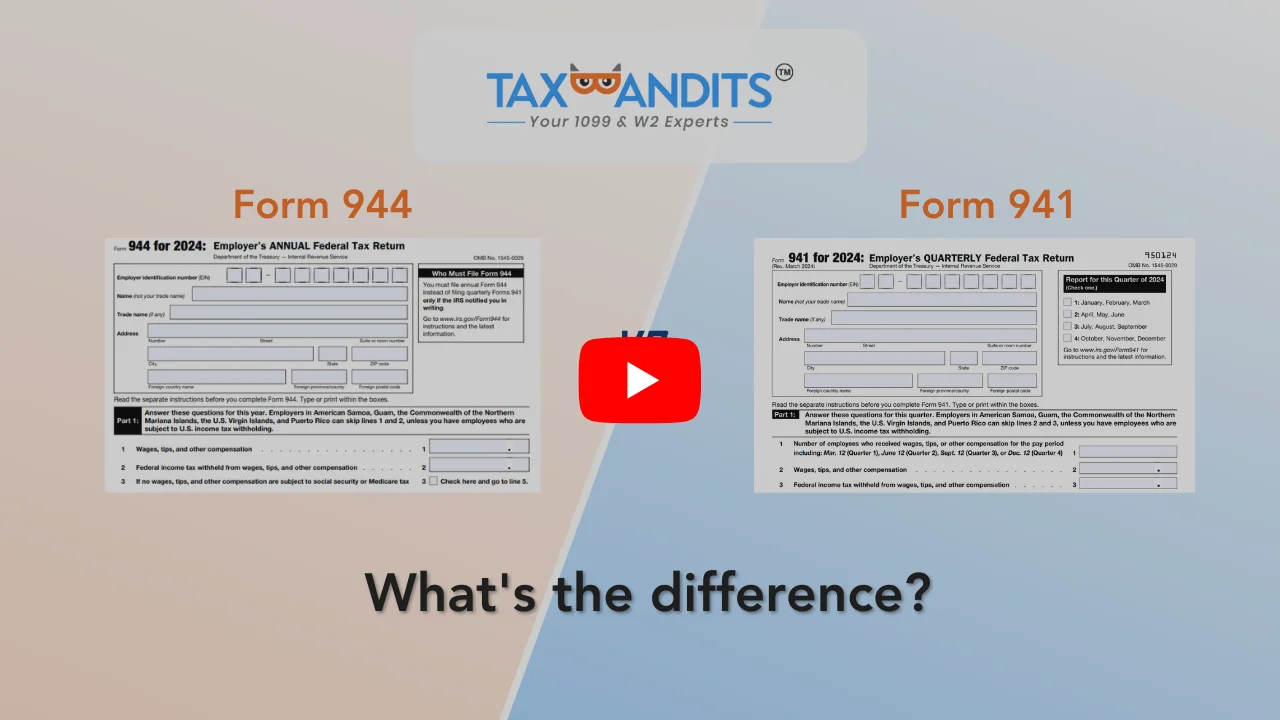Please check your email now!
Exciting news: Free payroll for small businesses is here! Register your interest today
Form 941 vs 944: What is the difference between 941 and 944

- Home
- Payroll Forms
- 941 vs 944
What is the difference between 941 and 944?
Form 944 is the annual equivalent of the quarterly Form 941. Small business employers who are notified by the IRS are required to file Form 944 annually (once a year) instead of filing Form 941 quarterly (four times a year).
Employers use both Form 941 and 944 to report the employment taxes, which include federal income tax withheld and Social Security and Medicare taxes withheld from employees. Although both the forms report the employment taxes, their filing requirement is different based on the employer's tax liability.
Refer to the table below for a detailed explanation of the differences between 941 and 944.
| Form 941 | Form 944 | |
|---|---|---|
| Who should file? | Employers with an estimated tax liability of more than $1,000 | Small business employers with annual liability of $1,000 or less |
| When to file? | Due quarterly (April 30, July 31, October 31, and January 31) | Due Annually (January 31) |
| Tax deposit requirements* |
|
|
*Regardless of the deposit schedule you follow, the IRS recommends you use the Electronic Federal Tax Payment System (EFTPS) to make your tax payments.
Which form should you file: Form 941 or 944?
Here are the detailed information about filing Form 941 or Form 944:
- Currently, if you're required to file Form 944, but your estimated tax liability is more than $1,000, you may be eligible to update your filing requirement to Form 941.
- If you're an employer required to file Form 941, but your estimated tax liability will be $1,000 or less for the tax year, you may be eligible to switch to Form 944.
Click here to learn how to request the IRS to change your filing requirement.
Your Form 941 and 944 Filing is Made Simpler with TaxBandits!
Failing to meet payroll tax deadlines or filing the wrong form can lead to IRS penalties. To avoid this, you must clearly understand which payroll form to file, their deadlines, and the differences between them.
At the same time, filing all the necessary payroll forms for your business is now made simpler with TaxBandits. TaxBandits offers various features to simplify your filing process, which includes a built-in internal error check for accurate filing and multiple payment options to make your tax payments.
Stop worrying about your payroll tax filing and start to spend time on your business growth!
Get Started with TaxBandits today and streamline tax filing for your business.